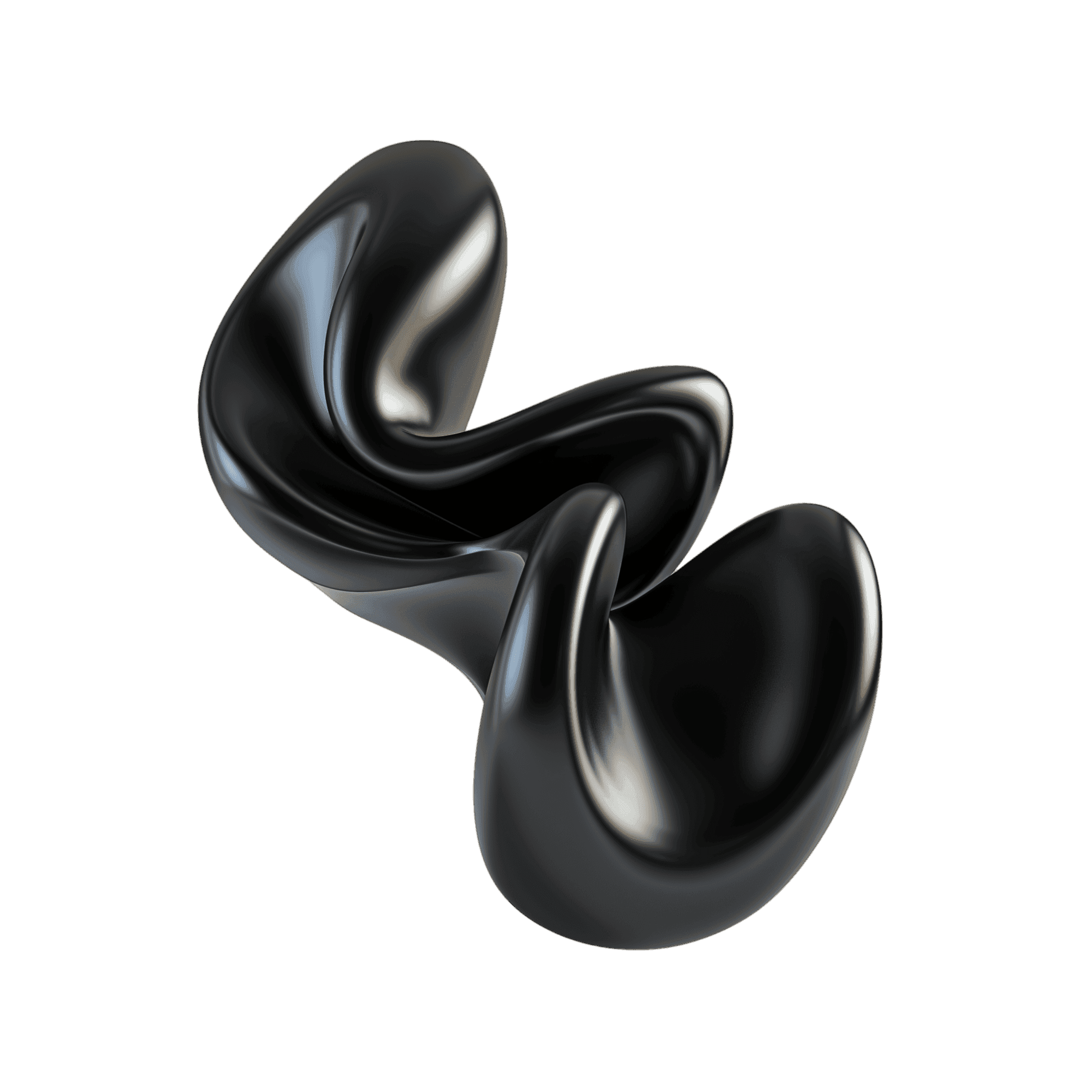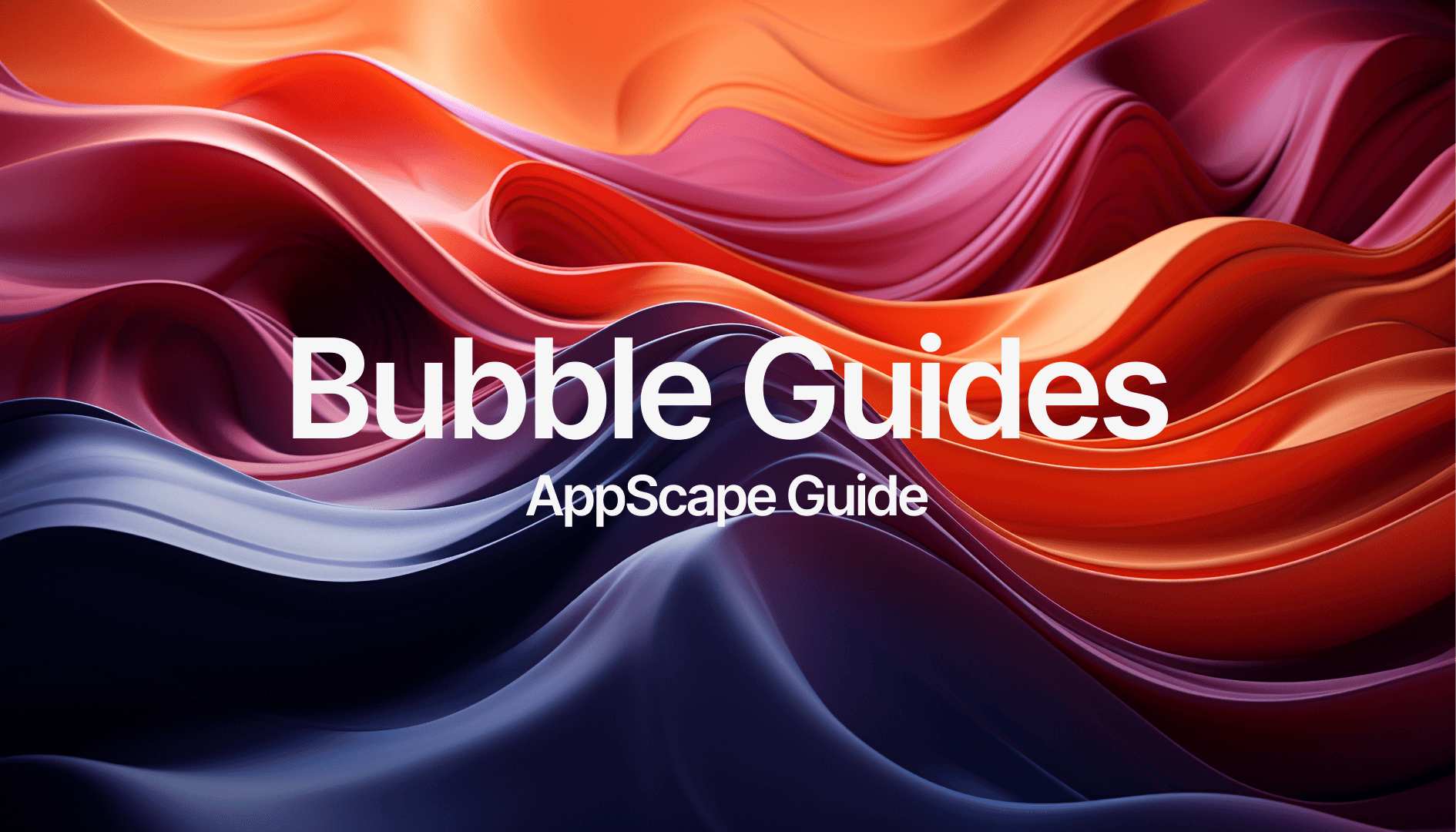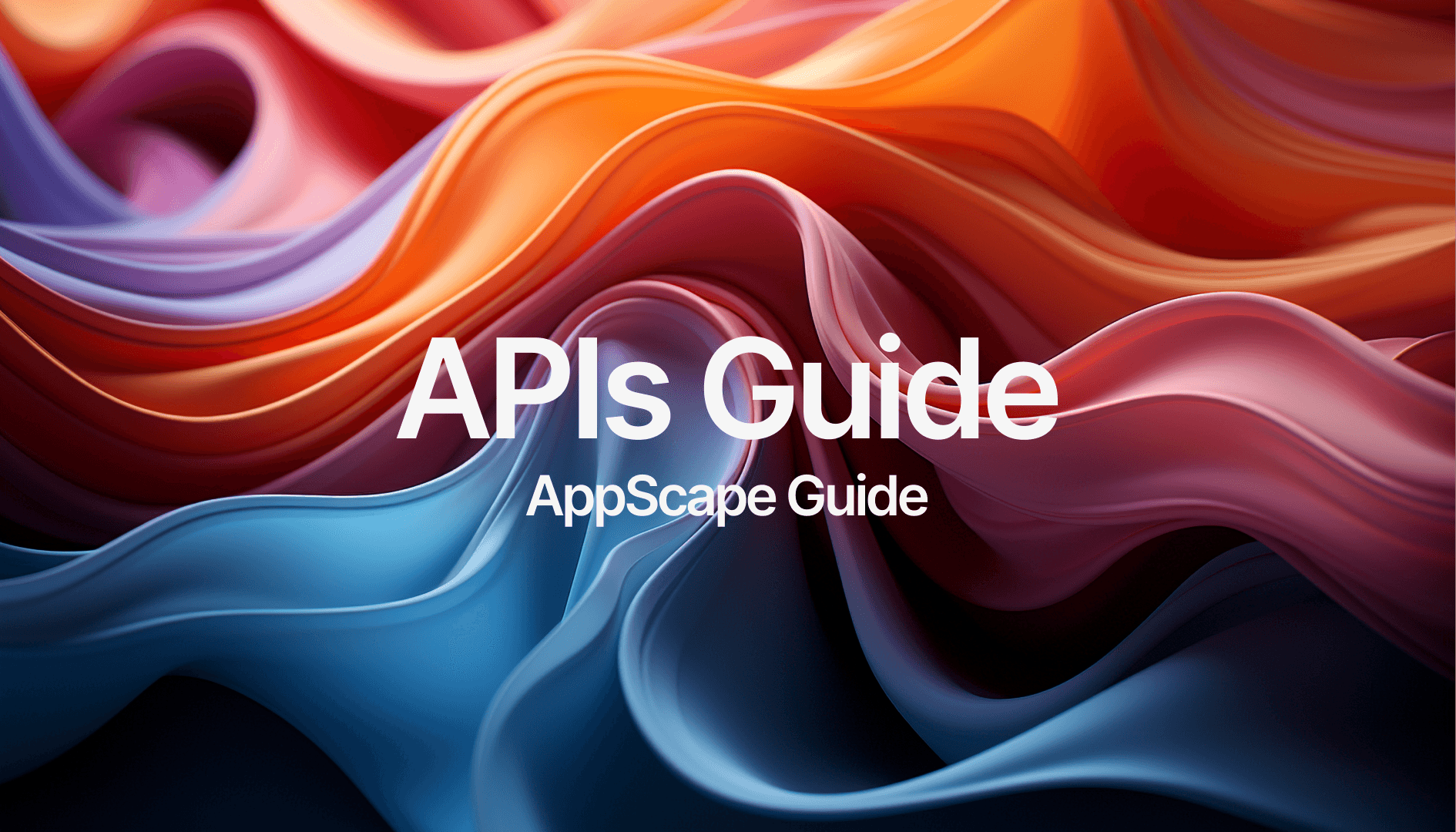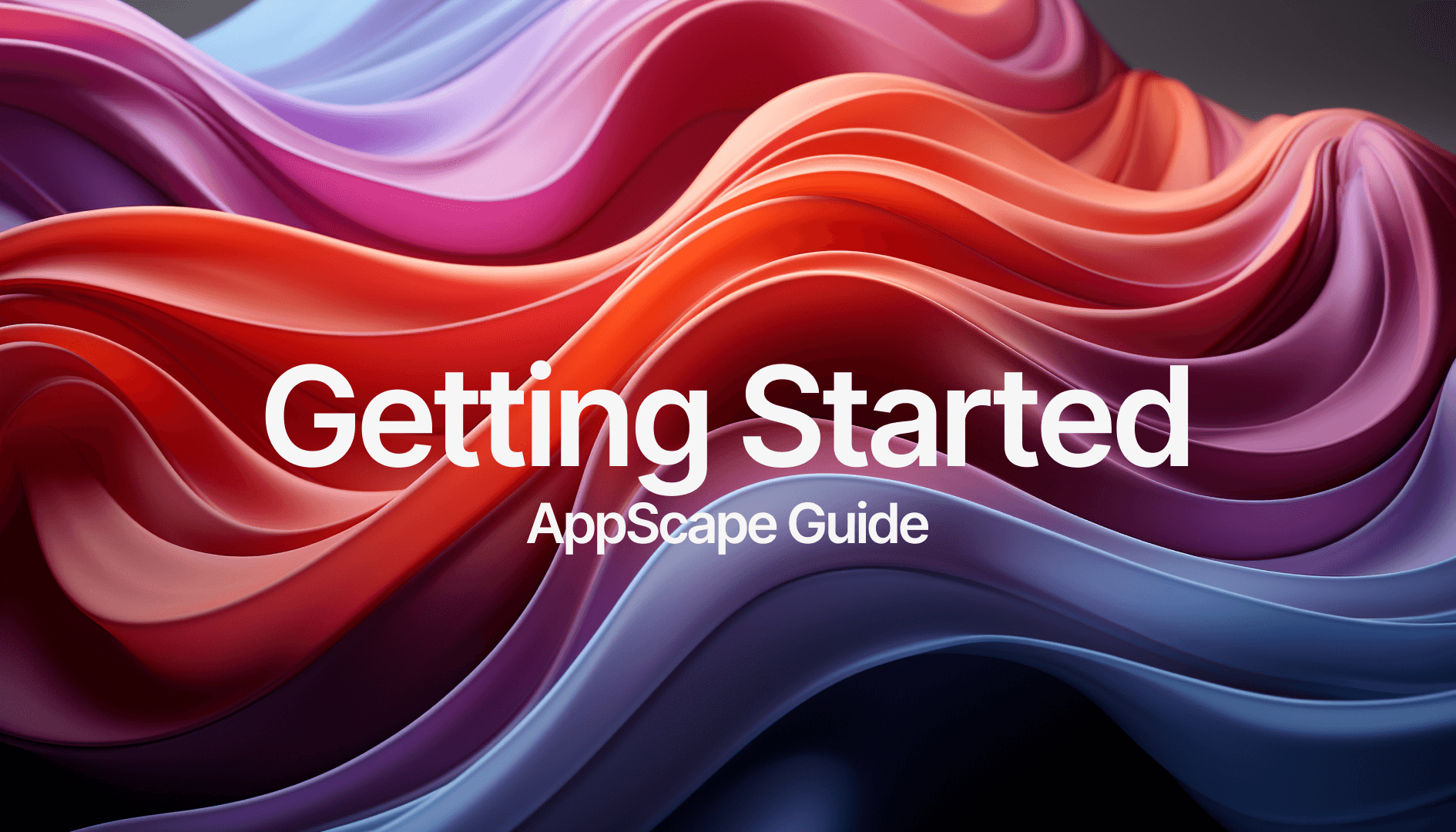Congratulations on acquiring your new Bubble app from AppScape! Whether you're familiar with Bubble or this is your first time working with a no-code platform, this guide will walk you through everything you need to know to get the most out of your app. We’ll cover all the essential features and help you customize and scale your app as needed.
We recommend watching this Bubble Introduction Video
Introduction to Bubble
Bubble is a powerful no-code platform that allows you to build web apps without writing any code. It’s perfect for entrepreneurs, freelancers, and small businesses who want to create apps quickly and affordably. With Bubble, you can design, customize, and launch fully functional web applications, including things like payment processing, user authentication, and more.
For AppScape users, we provide ready-made Bubble apps, meaning you don’t have to start from scratch. You can begin using and customizing your app right away!
Navigating the Bubble Editor
When you open your app in Bubble, you'll see the Bubble Editor, which is divided into several sections:
Design
This is where you build and customize the look of your app. You can drag and drop elements (like buttons, images, and text) to create your user interface (UI). The editor is highly visual, so you can see exactly how your app will appear to users.Workflows
Workflows control how your app behaves. They define what happens when a user interacts with your app, such as clicking a button, submitting a form, or signing up for an account. Think of workflows as the logic behind your app.Data
This section is where you manage your app’s database. Bubble uses dynamic data, which means you can connect your UI elements (like repeating groups or inputs) to your database so they display user-specific or app-specific information.Styles
Manage your app’s overall look and feel by defining reusable styles for buttons, text, inputs, etc. This makes it easy to maintain a consistent design across your entire app.Plugins
Add extra functionality to your app with plugins. These are pre-built tools that can extend your app’s capabilities (e.g., payments, chat, analytics). Bubble offers a marketplace of free and paid plugins.
Customizing the Design of Your App
Since you’ve already received a Bubble app from AppScape, the core design is in place. However, customizing the app to fit your brand and preferences is easy.
Editing Text and Images
Click on any text or image element to edit it. For text, simply type in your desired content. For images, you can upload your own files or use Bubble’s built-in image uploader.Changing Colors and Fonts
Select any element (like a button or text box) and change its color, font, and size in the Property Editor on the right side of the screen. You can create custom styles for branding consistency.Adding New Elements
Drag and drop new elements from the Elements Panel (on the left) to your page. You can add things like buttons, text boxes, forms, and icons. Place them wherever you want within your app’s layout.Responsive Design
Ensure your app looks good on different screen sizes (desktop, tablet, and mobile) by using the Responsive tab. Bubble allows you to adjust how elements behave when the screen size changes, ensuring a smooth user experience across devices.
Working with Workflows
Workflows are the backbone of your app, controlling what happens when users interact with it. Here’s how to make simple changes to workflows in your AppScape Bubble app.
Triggering Events
A workflow starts with an event, like a user clicking a button. For example, you might have a “Submit” button that, when clicked, sends data to your app’s database or triggers a notification. You can customize or create these workflows in the Workflow Editor.Adding Actions
After an event is triggered, Bubble performs actions. These actions can be things like navigating to a new page, sending an email, or creating a new record in your database. To add an action, click the Add an Action button in the Workflow Editor.Conditional Workflows
You can create workflows that only run under certain conditions. For example, you might want to show a popup only if a form is filled out correctly. To do this, use the Only When condition in the workflow settings.
Managing Your App’s Data
Your app already comes with a structured database, but you can view, edit, and expand it according to your needs.
Viewing the Database
Navigate to the Data tab to see the database tables (referred to as Data Types) and fields that store your app’s information. Common data types might include Users, Orders, or Posts, depending on the app you received.Creating New Fields
If you want to store more information in your app, you can add new fields to your data types. For instance, if your app collects user profiles but doesn’t store their social media links, you can add a new field (e.g., Social Media Links) to the User data type.Connecting Data to UI Elements
To display data from your database on your app’s pages, use Dynamic Data. For example, to show a user’s name on a profile page, click on the text element and insert dynamic data from the Current User data type.Handling User Input
You can create input forms (text fields, dropdowns, etc.) that allow users to add data to your app. For instance, if you have a blog app, users can fill out a form to submit a new post. This data is automatically saved to your app’s database.
User Authentication and Security
Most apps require users to sign up, log in, and manage their accounts. Bubble makes it easy to handle user authentication securely.
Login and Signup Workflows
Your app should already come with a login/signup feature. If you need to edit it, navigate to the Workflow Editor and find the workflow tied to the “Login” button. You can customize the fields, add security questions, or link it to external authentication systems (e.g., Google, Facebook).Setting Privacy Rules
To keep your app’s data secure, you can define privacy rules in the Data tab. These rules control who can view or edit certain types of data. For example, users should only be able to edit their own profile, not anyone else’s.Password Reset and Account Management
You can set up workflows that allow users to reset their passwords and manage their accounts (update emails, change preferences). Use the built-in Account Actions under the Workflow Editor to handle these scenarios.
Deploying Your App
Once you’ve made your customizations, you’ll want to publish your app for others to use.
Development vs. Live Version
Bubble offers two versions of your app: Development and Live. The Development version is where you make changes and test your app. Once everything is ready, you can deploy those changes to the Live version so your users can access them.Publishing Your App
To deploy changes, click the Deploy to Live button in the top-right corner of the editor. This will move your latest changes from Development to the Live version of your app.Connecting a Domain
If you haven’t already, you can connect a custom domain to your app (e.g., www.myapp.com). Go to the Settings tab, click on Domain/Email, and follow the instructions to connect a domain through your DNS provider.Monitoring Your App’s Performance
Bubble provides built-in analytics tools that let you monitor your app’s performance. Track user activity, page load times, and other metrics to ensure everything runs smoothly.
Using Plugins to Add Extra Functionality
Plugins are additional tools that expand what your app can do. Bubble offers a marketplace where you can find free and paid plugins.
Installing Plugins
Navigate to the Plugins tab and browse for plugins that can help your app. For example, if you want to add a payment system, you can install the Stripe plugin.Configuring Plugins
Once installed, configure the plugin by following the instructions in the Plugin Editor. Each plugin will have different setup requirements (e.g., API keys, account integration).Popular Plugins for AppScape Users
Stripe Plugin: For handling payments.
SEO Tools Plugin: To help optimize your app’s pages for search engines.
ChatGPT Integration: Use OpenAI’s ChatGPT API to create AI-powered features like chatbots or content generators.
Final Thoughts
Bubble is a powerful no-code platform that gives you full control over the design, functionality, and scalability of your app. As an AppScape user, you already have a head start with a pre-built app, but don’t hesitate to customize it to fit your needs. With this guide, you can confidently make changes, extend functionality, and launch your app to the world!







